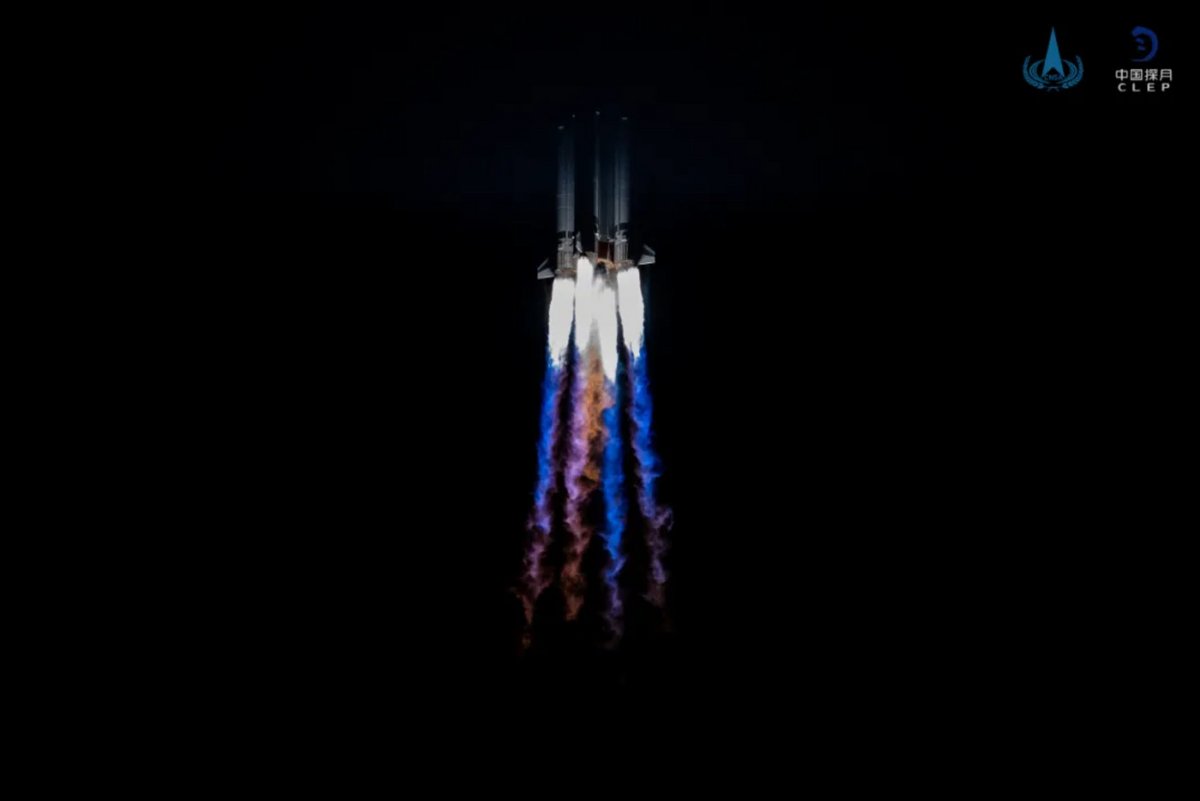While NASA and the European Space Agency prepare for the mission Mars Sample Return (MSR)a senior Chinese official unveiled the architecture of a mission also recovering samples to bring them back to Earth. A simpler and less scientific plan… To be the first?
However, it will not be a health walk.
A bit of Mars at home
It has been several years since the Chinese space authorities expressed their desire to bring back samples from the surface of Mars. However, these hopes have only been able to materialize since the successful launch of the Tianwen-1 mission last year, followed a few months later by the successful landing of the Zhurong rover. The latter is also continuing its mission on the surface currently, even if it is saving its energy because of the Martian winter.
It is therefore not so surprising to see Sun Zezhou, responsible for Tianwen-1, presenting a detailed concept for a mission to collect and return Martian samples. With one detail: if it were to take off in the right launch window, then it could bring its precious equipment back to Earth two years before the joint mission between Americans and Europeans!
Chinese concepts, American concepts
The Chinese mission (tentatively called Tianwen-3) would use two take-offs, for a fairly simplified mission architecture based on elements proven during China’s last lunar missions. A first launch would take place with a large lander, landing on the Martian surface and collecting samples on the spot (with drill, excavator, and possibly a very small rover) before taking off the collected elements in a capsule towards orbit.
The latter would then be joined by the second vehicle of the mission which would bring them back to Earth, to in turn drop a capsule with the samples. Thus, with two “classic” rockets (a Long March 5 and a Long March 3B), China could, with a first take-off in 2027, land on Mars in 2029 and return to Earth in 2031.
The joint mission between NASA and ESA to recover Martian samples has already started, with the Perseverance rover patiently traversing the delta of the Jezero crater to drill and capture the precious sediments at around forty sites of interest. But recovering those samples won’t be easy.
In the current mission scheme, two missions will take off in 2028 and then land in the Jezero crater: one with a recovery rover (and/or a helicopter like Ingenuity), the other with a rocket which, once the samples have been edge, will rejoin orbit. Then charge to another European mission to bring them home with the ERO orbiter in 2033.
In the delay game…
Nevertheless, it would be wrong to put the cart before the horse, whether on the Chinese or American side. First, even if there is every reason to believe that Sun Zezhou’s presentation is serious and endorsed by the decision-makers of the Chinese space program, the take-off of such an ambitious mission is still a long way off. And in five years, it’s possible…

But there could just as well be delays: China, often put forward as “more on time” than Western agencies thanks to its very long-term programs, has postponed its Chang’ lunar missions several times in recent years. E 5 then 6. In the same way, some hesitations put spokes in the wheels of the NASA project, as much as the estimated costs of the mission.
A future “first” which is already causing a lot of ink to flow
Then, it would be wrong to believe that the two mission profiles are equivalent. Certainly, in terms of prestige, China could be the first nation to bring back samples from Mars. Which would not be without a certain hint of “space race” in the 60s.
But given the precision (and the danger) of landing a platform, the Chinese device for collecting and recovering samples will necessarily be less ambitious than Perseverance, which crisscrosses a landscape for years and over tens of kilometers to find the most interesting geological sites.
Which does not mean either that coring an “easy” site is devoid of scientific interest… Simply, the ambitions would not be the same. It remains to be seen whether these predictions materialize: in any case, two sample recovery missions are more likely to succeed than one!
Source : SPACE NEWS

17